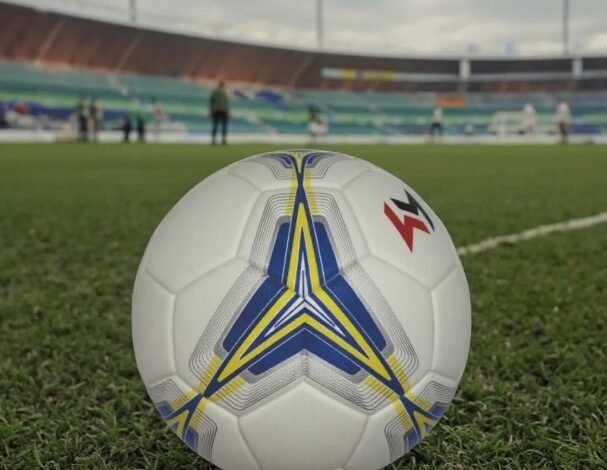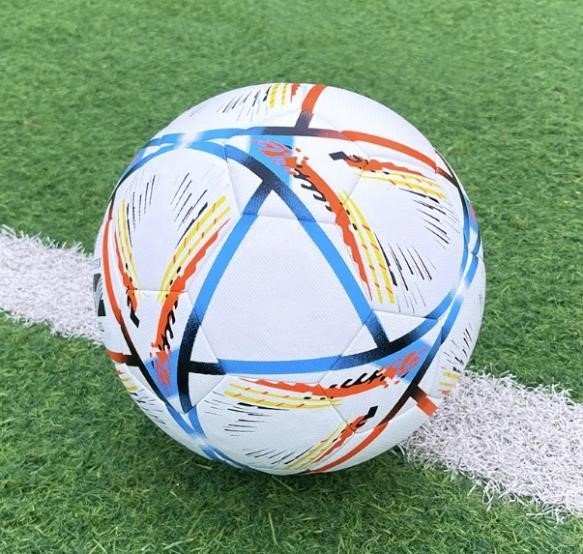How to Maintain Your Soccer Ball Size 5 for Long-Term Use

Maintaining your soccer ball size 5 is crucial for extending its life and ensuring peak performance on the field. A well-maintained ball can endure countless matches and practice sessions, keeping its shape and responsiveness intact. This article will provide you with practical tips and techniques on how to take care of your soccer ball, from cleaning and storage to proper inflation and more. Let’s dive into the essential routines that will help you preserve the quality of your soccer ball for long-term use, making every game as good as the first.
Why Proper Maintenance Is Essential for Your Soccer Ball Size 5
How Regular Maintenance Prolongs the Ball’s Life
Regular maintenance significantly extends the lifespan of your soccer ball. By routinely checking for wear and tear, and addressing any issues promptly, you prevent small problems from becoming major repairs. For instance, cleaning off dirt and debris after each use prevents the material from degrading over time. Keeping the ball properly inflated ensures that it maintains its shape and structure, allowing you to enjoy quality games for longer periods.
The Impact of Proper Care on Performance
Proper care directly influences your soccer ball’s performance. A well-maintained size 5 ball bounces more accurately, travels in a predictable trajectory and feels consistent underfoot, which can enhance your skills and game experience. Conversely, neglecting your ball can lead to uneven surfaces, unpredictable movement, and ultimately, a frustrating game. Taking the time to look after your ball ensures it performs reliably every time you step onto the field.
Common Mistakes to Avoid When Maintaining Your Soccer Ball
Avoiding common maintenance mistakes can save your ball from premature wear and tear. One of the biggest errors is over-inflating the ball, which can cause the seams to split and distort its shape. Similarly, using harsh cleaning chemicals can degrade the material and compromise the ball’s integrity. Storing the ball in extreme temperatures, whether too hot or too cold, can also damage its structure. Being aware of these pitfalls helps in ensuring your soccer ball remains in excellent condition for years.
Cleaning Your Soccer Ball Size 5: Step-by-Step Guide
The Right Way to Clean Your Ball’s Exterior
To clean your soccer ball’s exterior, start by removing loose dirt and debris with a soft brush or cloth. Use mild soap mixed with water to gently scrub the surface. Avoid using harsh chemicals or abrasive cleaning tools, as these can damage the material. Rinse the soap off thoroughly with clean water, ensuring no residue is left behind. Finally, allow the ball to air-dry completely.
How to Remove Stubborn Dirt and Stains
Stubborn dirt and stains might require a bit more attention. Create a paste using baking soda and water, then apply it directly to the stained areas. Gently scrub with a soft brush in a circular motion until the stains begin to lift. Avoid soaking the ball in water for extended periods, as this can weaken the materials. Once the stains are removed, rinse the ball thoroughly and let it air dry.
Drying Your Ball: Best Practices for Longevity
Proper drying is crucial for maintaining your soccer ball. After cleaning, wipe the ball with a dry cloth to remove excess moisture. Let the ball air dry at room temperature, avoiding direct sunlight or heat sources like radiators that can warp or crack the material. Ensure the ball is completely dry before storing it, as lingering moisture can lead to mold and mildew, which can compromise the ball’s durability.
Storing Your Soccer Ball Size 5 for Maximum Durability
Where to Store Your Ball: Do’s and Don’ts
Store your soccer ball in a cool, dry place to maximize its lifespan. Always keep it in a well-ventilated area, away from direct sunlight and extreme temperatures. Do not leave it in the trunk of a car, as the heat can cause the material to weaken. Avoid storing the ball in damp areas, as moisture can lead to molding. Instead, find a dedicated sports equipment area that ensures consistent, moderate conditions.
How Temperature Affects the Ball’s Material
Temperature fluctuations can have a significant impact on your soccer ball. Exposure to extreme heat can cause the materials to become brittle, leading to cracks and failure under pressure. On the other hand, cold temperatures can make the ball hard and less responsive. To preserve the ball’s optimal condition, store it at room temperature whenever possible, avoiding environments that could cause severe temperature changes.
Using Ball Bags and Other Accessories for Protection
Using ball bags is an excellent way to protect your soccer ball when transporting or storing it. These bags offer a layer of protection against dirt, dust, and potential abrasions. Additionally, consider investing in a ball stand or rack to hold the ball in place and maintain its shape when not in use. Proper accessories help in reducing exposure to potentially damaging conditions, enhancing the ball’s longevity.

Inflating and Deflating Your Soccer Ball Size 5
The Proper Inflation Level for Optimal Performance
Maintaining the correct inflation level is key for optimal performance. Typically, a size 5 soccer ball should be inflated to 8.5 to 15.6 psi (pounds per square inch). Check the manufacturer’s guidelines for the precise pressure range. Use a pressure gauge to ensure the ball is neither under-inflated, which can make it sluggish, nor over-inflated, which can cause bursting or seam separation.
How Over-Inflation or Under-Inflation Affects the Ball
Over-inflation can make your soccer ball hard and uncomfortable to play with. It also increases the risk of damaging the seams and reducing the ball’s lifespan. Underinflation, on the other hand, can lead to a lack of responsiveness and poor performance. It can cause the ball to lose its shape, making it difficult to control during play. Therefore, keeping the ball at the recommended pressure is crucial for maintaining its performance and durability.
The Best Tools for Inflating Your Ball
Using the right tools for inflating your soccer ball ensures it remains in good condition. A quality ball pump with a built-in pressure gauge is essential. It helps in accurately measuring and achieving the correct pressure. Needle adapters are also important to have, as they fit the ball’s valve perfectly. Hand pumps are handy for on-the-go inflation, but electric pumps with auto shutoff features are great for consistent and precise inflation.
Conclusion
Maintaining your soccer ball size 5 properly ensures it stays in optimal condition, providing the best performance. Regular cleaning, correct storage, and proper inflation are essential practices that prolong the ball’s life. Avoiding common mistakes, such as over-inflation and improper cleaning, further helps in preserving the ball. Using protective accessories and storing the ball correctly can prevent unnecessary wear and tear. For teams or clubs, purchasing soccer balls size 5 bulk can ensure you have a reliable supply of well-maintained balls for consistent practice and play. By following these guidelines, you can enjoy using your well-maintained soccer ball for many more games and practice sessions. Keep these tips in mind and make the most of your soccer experience.



